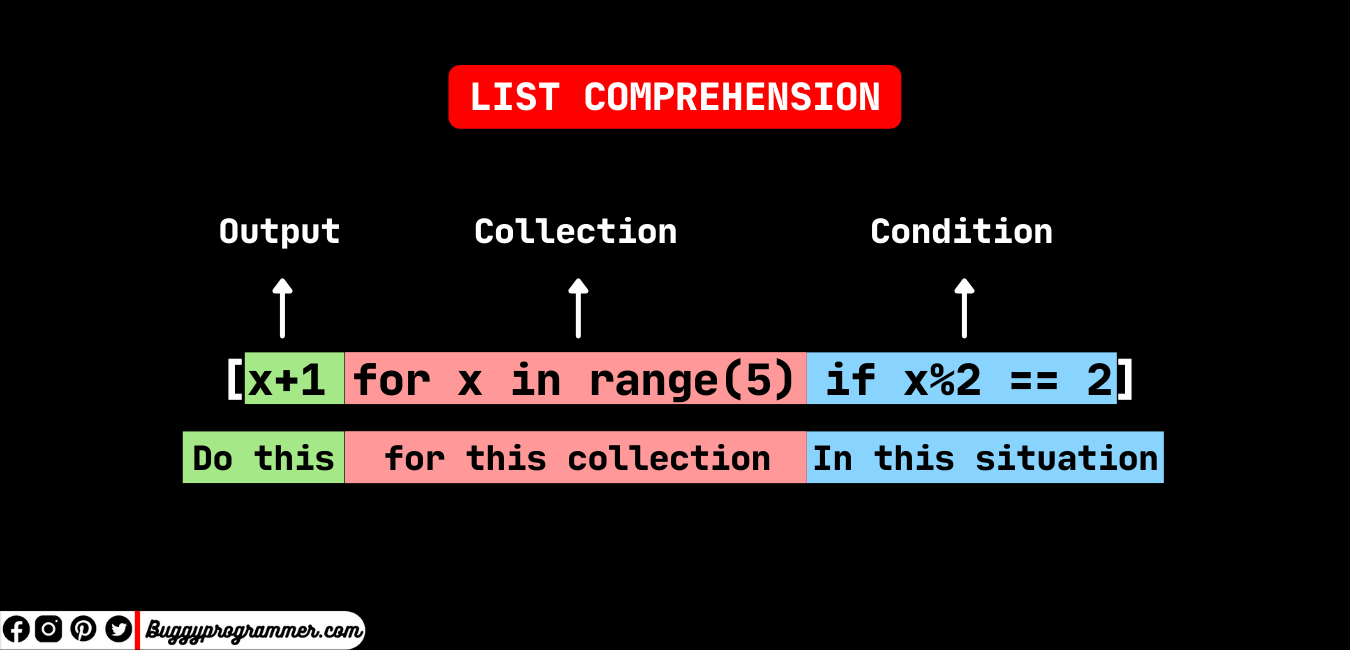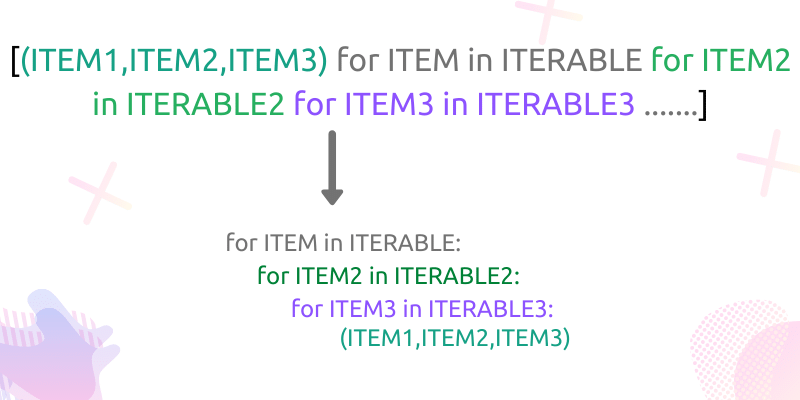

- #LIST COMPREHENSION PYTHON HOW TO#
- #LIST COMPREHENSION PYTHON SERIES#
- #LIST COMPREHENSION PYTHON FREE#
List = (members of the list from index 0 to index 4, without the member at index 4) List = (members of the list from index 1 to index 3, without the member at index 3) For example, using the same list example above list = (all the members of the list] List slicing is the method of splitting a subset of a list, and the indices of the list objects are also used for this.

For example, list = 20 Python List slicing The last member of a list can also be accessed by using the index -1. To access each of the values from the list, you would use: The second value, 22, has an index of 1Īnd so on.

#LIST COMPREHENSION PYTHON HOW TO#
#LIST COMPREHENSION PYTHON SERIES#
I think at this point in the series I’m going to start exploring basic concepts like this and stretching them to their limits. I hope you had as much fun reading through this article on list comprehensions as I did writing it. # Generate all possible pairs from two lists # Duplicate, filter, and scale a 1D list of constants # Duplicate and filter out non-negatives from 1D list of constants # Duplicate and scale a 1D list of constants
#LIST COMPREHENSION PYTHON FREE#
Feel free to grab what you need and go! If you’d like to play with any of these solutions, I’ve put them all in a Jupyter Notebook for your pleasure. A Little RecapĪs always, here is a giant dump of all the examples covered in this article with comments briefly explaining each snippet. How cool is that? Of course, if you have anything other than numbers or strings at the deepest levels of your matrix, you’ll have to handle the rest of the cloning process yourself. As you can probably imagine, we could abstract this concept into a recursive function which performs a list comprehension on every dimension of the matrix: def deep_copy(to_copy): Instead of performing a surface-level copy, we retrieve each list and copy them using the same comprehension from before. To do that, we can leverage nested list comprehensions: my_list =, ] With the shallow copy example mentioned earlier, we’re not able to duplicate nested lists such as two-dimensional matrices. In this case, we only generate a pair if the number from the first list is larger than the number from the second list. Instead, the goal is to understand the list comprehension syntax: nums = Unlike other articles in this series, there’s not exactly a concrete problem we’re trying to solve in this article. And of course, you get to see my beautiful face! Problem Introduction If you have some time, I recommend checking out this summary which covers all the topics from this article with even more examples.

Lately, I’ve been putting together videos for these articles. Video can’t be loaded because JavaScript is disabled: The Definitive Guide to List Comprehensions in Python ()


 0 kommentar(er)
0 kommentar(er)
